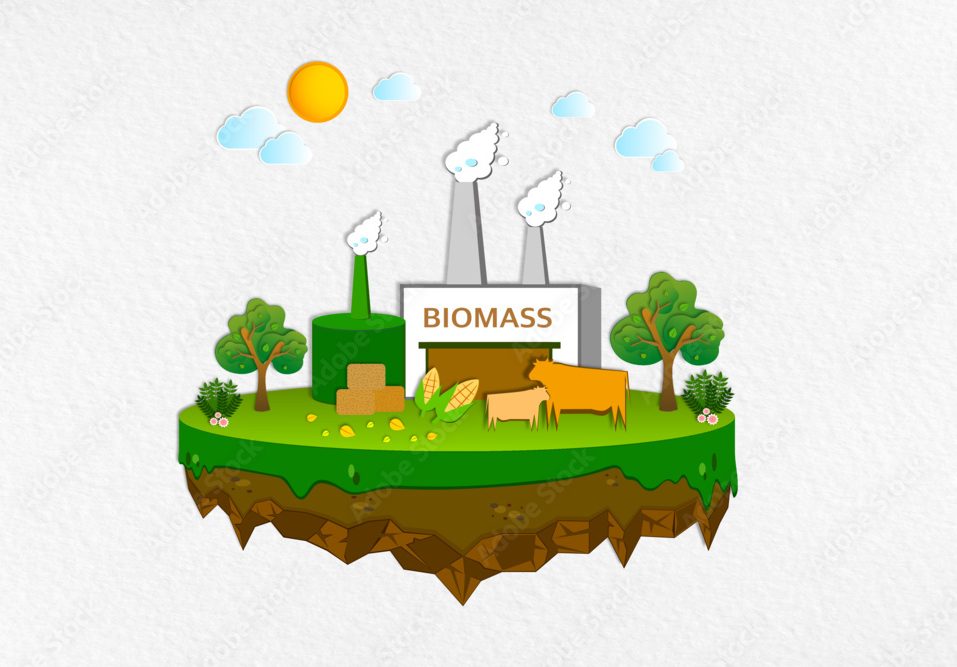
December 10, 2024

Biomass, a versatile and renewable source of energy, has been utilized for millennia, from cooking food over an open fire to powering modern industries. Derived from organic materials like plants and animals, biomass provides an essential and flexible energy resource. Whether it’s used for heating, electricity generation, or transportation fuels, biomass continues to play a significant role in global energy consumption. While its contribution has evolved over the years, it remains an important energy source, especially in developing nations, where biomass is crucial for cooking and heating.
Biomass refers to any organic material derived from plants or animals that can be converted into energy. Unlike fossil fuels, biomass is renewable, meaning it can be replenished naturally through biological processes. Biomass sources are varied and abundant, ranging from agricultural crops to waste materials, and even municipal solid waste.
Some common sources of biomass include:
Historically, biomass was the largest source of energy in the United States until the mid-1800s, primarily used for heating and cooking. By 2023, however, biomass accounted for approximately 5% of total U.S. primary energy consumption. Despite its lower share in today’s energy mix, biomass continues to serve critical functions, particularly in rural areas and developing countries where it remains a vital source for heating, cooking, and power generation.
In more industrialized settings, biomass is employed in electricity generation, district heating, and even as a transportation fuel. In countries such as India, Brazil, and parts of Africa, biomass—often in the form of wood or agricultural waste—is an essential resource, particularly in off-grid rural areas where it supports basic energy needs.
The versatility of biomass lies not only in its diverse sources but also in the variety of processes available for converting it into usable energy. Biomass can be transformed through several methods:
Biomass is often touted as a cleaner alternative to fossil fuels, especially because it is carbon-neutral. When biomass is burned or converted into biofuels, it releases carbon dioxide (CO2) into the atmosphere. However, this CO2 is part of the natural carbon cycle. Plants absorb CO2 from the air as they grow, and when they are harvested for biomass, the CO2 they release when burned is roughly equal to the amount they absorbed. This means that biomass can contribute to reducing the net increase in greenhouse gases compared to burning fossil fuels, which release carbon stored for millions of years.
Moreover, biomass offers several advantages over conventional energy sources:
As the world transitions to cleaner energy solutions, biomass will continue to play an essential role, particularly in countries seeking to reduce their reliance on fossil fuels. Its versatility in applications—from providing heat for homes to powering vehicles—makes it a valuable part of the renewable energy landscape. Moreover, as technology improves, the efficiency of biomass conversion processes will continue to increase, making it even more cost-competitive.
The potential for biomass is vast, especially when we consider the vast amounts of waste generated by industries such as agriculture, forestry, and municipal waste management. The ability to transform this waste into useful energy is key to reducing both waste and emissions.
However, challenges remain. The need for sustainable biomass production practices is critical to ensuring that biomass does not lead to deforestation, land degradation, or food insecurity. Ensuring that biomass is sourced responsibly—using waste materials or sustainably grown crops—is essential for maintaining its environmental benefits.
Biomass is more than just a fuel source—it’s an essential part of the energy transition. Whether it’s used for heating homes, generating electricity, or fueling vehicles, biomass offers a renewable, locally available energy solution that can help reduce dependence on fossil fuels. As we continue to innovate and improve the technologies surrounding biomass conversion, its role in achieving a sustainable, low-carbon energy future will only grow.
In the coming years, increasing investment in biomass infrastructure and research will unlock new potential for this versatile energy source. By harnessing the power of plants and animals, biomass can contribute to a cleaner, more resilient energy system that meets the needs of today while safeguarding the planet for future generations.